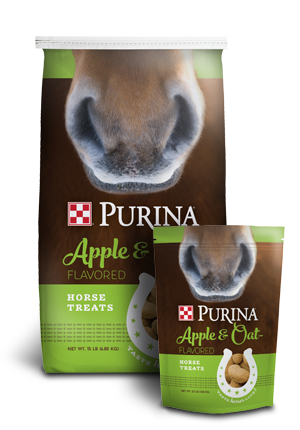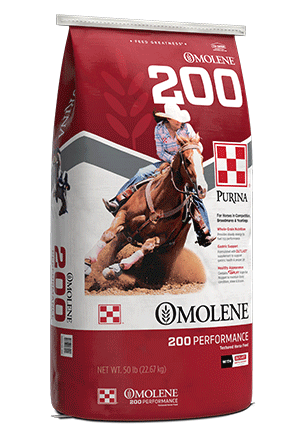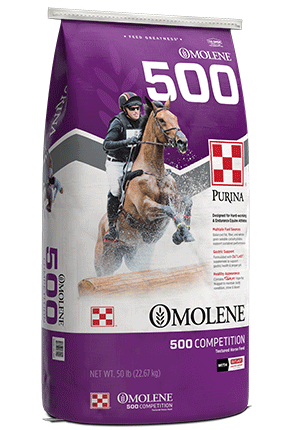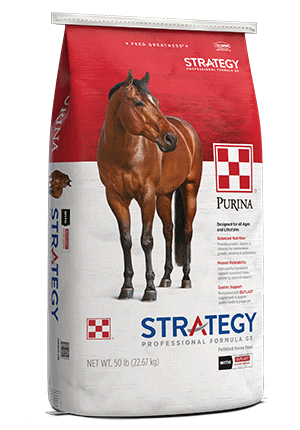
Helping Prevent Pasture-Associated Laminitis and Colic in Horses
Care : Health Issues

After a long, cold winter, we all look forward to spring.
It’s time to get out of the indoor arena and hit the trails again, or start legging up for the summer show season. Unfortunately, the long-awaited change of season can spell danger to horses on pasture. But by being aware of potential problems and taking steps to protect your horses from them, you can still enjoy the spring.
Warm-season grasses such as Bermuda grass, crabgrass and native grasses store excess sugar as starch. Starch levels in these grasses may increase when they are grown under heat stress. Cool-season grasses such as ryegrass, orchard grass, timothy grass and fescue primarily store sugars as fructan.
Studies have shown there is considerable variability in NSC levels in grasses depending on the season, ambient temperature, light intensity and time of day. In fact, NSC concentration is primarily a function of these environmental factors. NSC concentrations are highest during late spring, with cool temperatures, when the sun is bright and in the late afternoon.
Interestingly, studies have also shown an inverse relationship between nitrogen and NSC content. You would think fertilized pastures that grow more robustly would have higher NSC content and, on a per- acre basis, you would be correct. However, the concentration of NSC within the grass itself is lower if it has been fertilized.
Fructans and structural carbohydrates (cellulose, hemicellulose and pectins) pass undigested through the small intestine and into the cecum and colon, where the microbial populations ferment them. Abnormal or elevated levels of fermentation within the cecum and colon may lead to increased production of gas, which can result in colic.
If large amounts of fructan and starch reach the hindgut, a shift may occur in the microbial population, favoring lactic-acid-producing organisms. Excess lactic acid may decrease the pH in the hindgut, which can result in increased permeability of the intestinal wall. This allows various toxins and other substances into the bloodstream, where they may be carried to the hoof and incite laminitis.
Several conditions associated with being overweight or insulin dysregulation could exacerbate the effect of fructan and starch in the hindgut, including increased stress on the hoof due to high body weight; the existence of a pro-inflammatory state which makes them more apt to produce an extreme inflammatory response; reduced glucose delivery to the cells of the lamina of the hoof; alteration in blood flow to the hoof; and/or changes in the function of the cells lining the blood vessels in the hoof.
However, for many horse owners, this may not be practical. Alternatives to restricting pasture access include mowing pastures, building partitions in the pasture to limit the space where horses may graze lush grass, moving them to shaded pastures, using grazing muzzles, limiting turnout times (two to four hours per day), and feeding supplemental hay and concentrates to curb hunger with the hope of limiting pasture consumption.
It’s time to get out of the indoor arena and hit the trails again, or start legging up for the summer show season. Unfortunately, the long-awaited change of season can spell danger to horses on pasture. But by being aware of potential problems and taking steps to protect your horses from them, you can still enjoy the spring.
Green grass — not so sweet for many horses
As horse pastures come out of winter dormancy, their photosynthesis activity greatly increases. As a result, the grass becomes full to bursting with the byproduct of all this activity: sugars. Grass contains numerous types and amounts of sugars depending on the species. Glucose, sucrose and fructose are produced through photosynthesis and used for energy, as well as building blocks of other plant components. Excess sugars are stored in the plant as starch and fructan. Simple sugars, starch and fructan in plants are referred to as nonstructural carbohydrates (NSC).Warm-season grasses such as Bermuda grass, crabgrass and native grasses store excess sugar as starch. Starch levels in these grasses may increase when they are grown under heat stress. Cool-season grasses such as ryegrass, orchard grass, timothy grass and fescue primarily store sugars as fructan.
Studies have shown there is considerable variability in NSC levels in grasses depending on the season, ambient temperature, light intensity and time of day. In fact, NSC concentration is primarily a function of these environmental factors. NSC concentrations are highest during late spring, with cool temperatures, when the sun is bright and in the late afternoon.
Interestingly, studies have also shown an inverse relationship between nitrogen and NSC content. You would think fertilized pastures that grow more robustly would have higher NSC content and, on a per- acre basis, you would be correct. However, the concentration of NSC within the grass itself is lower if it has been fertilized.
Effect of grasses on horses
When horses consume grass, starch is digested to glucose by enzymes in the small intestine and absorbed, along with the simple sugars contained in the plant. If too much starch is ingested, it may overwhelm the capacity of the small intestine to digest and absorb it, resulting in overflow into the hindgut (cecum and colon).Fructans and structural carbohydrates (cellulose, hemicellulose and pectins) pass undigested through the small intestine and into the cecum and colon, where the microbial populations ferment them. Abnormal or elevated levels of fermentation within the cecum and colon may lead to increased production of gas, which can result in colic.
If large amounts of fructan and starch reach the hindgut, a shift may occur in the microbial population, favoring lactic-acid-producing organisms. Excess lactic acid may decrease the pH in the hindgut, which can result in increased permeability of the intestinal wall. This allows various toxins and other substances into the bloodstream, where they may be carried to the hoof and incite laminitis.
Not all horses are susceptible to colic or laminitis
Since not all horses grazing a spring pasture will experience problems like colic and laminitis, it is reasonable to assume that certain horses are more susceptible than others to the ingestion of NSC (especially fructan) in grasses. Horses that are obese or have insulin dysregulation due to disease (such as Pituitary Pars Intermedia Dysfunction or Equine Metabolic Syndrome) appear to be more susceptible than those with more moderate body condition and normal insulin sensitivity.Several conditions associated with being overweight or insulin dysregulation could exacerbate the effect of fructan and starch in the hindgut, including increased stress on the hoof due to high body weight; the existence of a pro-inflammatory state which makes them more apt to produce an extreme inflammatory response; reduced glucose delivery to the cells of the lamina of the hoof; alteration in blood flow to the hoof; and/or changes in the function of the cells lining the blood vessels in the hoof.
Take preventative steps
Prevention of pasture-associated laminitis and colic in horses is relatively simple in theory but can be very challenging in practice. Limiting access to pastures during periods when NSC levels are anticipated to be high (late spring, days that are sunny and cool, and during the late afternoon) is ideal.However, for many horse owners, this may not be practical. Alternatives to restricting pasture access include mowing pastures, building partitions in the pasture to limit the space where horses may graze lush grass, moving them to shaded pastures, using grazing muzzles, limiting turnout times (two to four hours per day), and feeding supplemental hay and concentrates to curb hunger with the hope of limiting pasture consumption.
Healthy weight and exercise for your horse
Maintaining horses in ideal body condition (a body condition score of 4.5 to 6) may be one of the most important ways to minimize the risk of pasture-associated laminitis and colic. A regular, consistent exercise program is beneficial in controlling weight as well as stimulating gut motility, which may help decrease the risk of colic. Being aware of the dangers associated with spring pastures and taking steps to protect your horses from them helps everyone enjoy the season.




